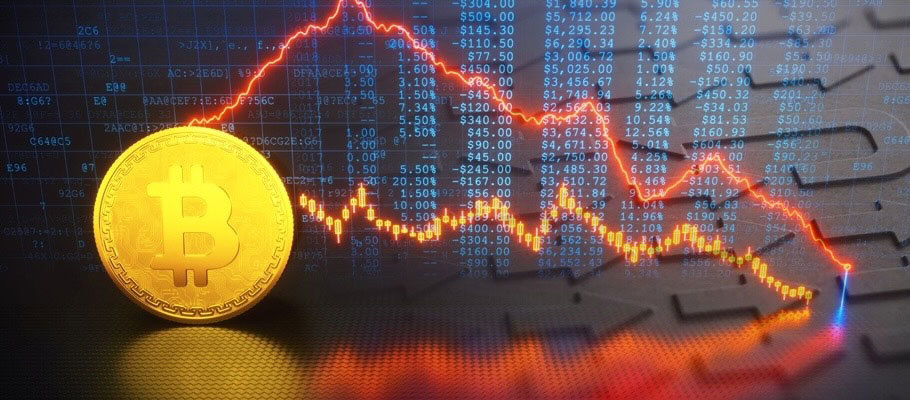
Published: October 19th, 2022
Belying its reputation as an asset class marked by extreme ups and downs, crypto hasn't been particularly volatile in recent weeks.
According to new data from blockchain analytics firm Kaiko, BTC's 20-day volatility has been similar to the NASDAQ for the first time in nearly 24 months. In an unexpected swapping of roles, Bitcoin’s price has been more or less the same since the beginning of September. The NASDAQ and the S&P 500 have dropped by 12 per cent and 11 per cent respectively in the same period.
Bitcoin’s price has historically been correlated with technology stocks, though with a higher ‘beta’ (propensity for volatility) than other financial assets. Despite the impressive gains posted in 2021, its high beta rating has kept many investors from relying on it as safe-haven asset. Despite a price plunge in June, BTC and other major cryptos have been some of the best-performing assets in Q3, after the mighty Greenback.
Bitcoin’s price did drop back to lows last seen in 2020 during the week commencing 10th October, after core US inflation topped another 40-year high. Both BTC and equities fell on the news, before quickly bouncing back to their previous ranges.
The previous plunge seen in June followed the release of American inflation data for May, which showed consumer prices rising at a burning hot rate of at 8.7 per cent. Investors saw it as a sign that the Federal Reserve wouldn’t be altering its aggressive policy course any time soon, prompting a risk-off move that shifted money away from riskier assets.
However, while high inflation has held firm for months, crypto’s price action hasn’t surged or plunged with subsequent updates to the consumer price index (CPI) inflation measure. Stocks, on the other hand, have been in a slow-but-steady decline.
BTC’s stability has been all the more notable given the hawkish stance taken by central banks worldwide, which have turned many bonds into an opportunity for rapid gains. As Reuters reported in September, Fed policy has sent bond yields skyrocketing.
Blockchain analyst Will Clemente noted in an October blog that Treasury market volatility has been much higher than Bitcoin volatility in the third quarter. At the time, volatility in stock prices hit all-time highs when compared to price moves for Bitcoin.
With global assets demonstrating weakness against the dollar across the board, even the UN has asked the Fed to ease off on further rate rises. At the moment however, Washington’s central bankers show no signs of letting up.
This year has been a shocker for many crypto enthusiasts, with market leader Bitcoin sinking to around a third of its 2021 high amid periods of sudden surges followed by further drastic dips. Even crypto leaders have advised investors to take added caution. In a May discussion on Reddit, Binance CEO Changpeng Zhao said most crypto traders ‘probably need to diversify, though I am not a good example. I am all in Binance.’
His holdings were spread between Bitcoin (BTC), Binance Coin (BNB), and other cryptos, he said, but all on the Binance exchange. 'I use my Binance Card everywhere I go,’ he said.
The 40-something tech entrepreneur learned his trade designing trading systems for the Tokyo Stock Exchange and Bloomberg’s Tradebook derivatives trading platform. He launched Binance in 2017 and now holds 30 per cent of the company. With a net worth of over USD 17.2 billion, Forbes magazine has him at number 19 on its ‘richest people in the world’ list.
Known informally as ‘CZ’, Zhao answered a number of questions about Binance’s business, including its decision to trade LUNA despite the coin’s collapse, how Binance handles custody of trader funds, and the development pipeline for Binance Chain.
Answering why the exhange resumed LUNA trading after validators halted it when the cryptocurrency’s value fell to USD 0.00 on 13 May, Zhao said that by continuing trading, Binance was able to put pressure on the validators to re-start activity.
‘We did suspend trading for a short time when the validators paused the blockchain, and even that had our complaints line buzzing,’ he Reddited. ‘I do think our actions forced the validators to re-start activity on the network again, which happened within a few hours.’
The risk to traders was acceptable, Zhao maintained, because crypto markets are open and free of bias.
‘No one was forced to trade (LUNA) just because trading was available. There are always buyers with a high tolerance for risk. The marketplace is neutral.’
The NFT market has also slumped from the heady heights seen in 2021 and early 2022, but there have still been opportunities for gains. In July the CryptoPunks NFT collection saw its floor price surge following two multi-million-dollar sales in rapid succession.
On Monday 18th July, the floor price for CryptoPunks on secondary marketplaces jumped to above USD 100,000 for the first time since the crypto crash began in mid-May. Data from NFT Price Floor show the floor price for CryptoPunks at 84.84 ETH, or about USD 113,000 at time of writing.
That means the entry-level price for CryptoPunks leapt by more than 30 per cent in a week.
The rising value of Ethereum, up 27 per cent over the past seven days, is part of the story. However, when measured against ETH, the CryptoPunks floor beat Ether's rise by nearly 12 per cent over the past week and by nearly 26 per cent over the past month.
So far, it doesn’t signal a market-wide uptrend for high-value NFTs. Bored Ape Yacht Club has seen its ETH floor price fall by five per cent over the past week.
An NFT is a blockchain token that indicates proof of ownership for another asset, typically a digital product like a unique online profile picture, and sometimes an artwork, collectible, or video game item. The NFT market reached USD 25 billion in trading volume last year, adding roughly USD 20 billion more for the 2022 year-to-date.